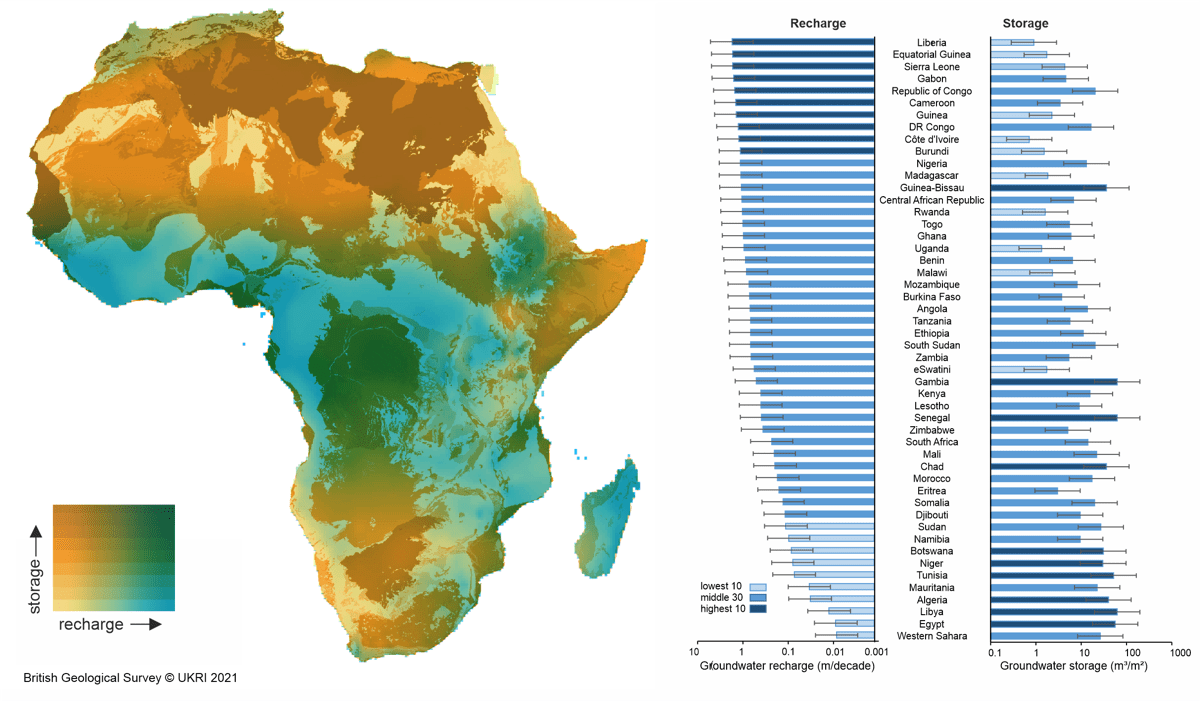Introduction – Thirsty For Water…
 |
| Fig1: Safe Water is a basic right |
Welcome to my "Africa Water Developments and Politics" blog series. Water development is essential as Africa has the lowest proportion of national populations to safe water (WHO-UNICEF Joint Monitoring Program, 2017) and the lowest per capita rates of food production in the world (Funk and Brown, 2009). Every year, we read reports of severe drought and famine with 1 in 3 Africans faces water scarcity, and approximately 400 million people in sub-Saharan regions like Ethiopia, Tanzania, and Uganda having less than 500㎥/person of basic water annually. In 2023, areas in the Horn of Africa, especially Kenya, languish the longest drought and hunger (Fig2) (WFP, 2022).
Physical aspect of climate and topographical influences.
 |
| Fig3: Rainfall cycles across Africa between June-March |
Ironically, Fig4 map shows that most African countries have sufficient groundwater for people to survive and thrive – sometimes for more than 50 years.
 |
| Fig4: Ground Water - More than enough water supply. |
Hence, we must change the popular narrative that Africa lacks water security due to limited resources. The focus goes beyond coping with water scarcity and addressing the political aspects of managing resources sustainably and equitably, finding the right solution and delivering water services reliably and affordably. It also involves financing politics on mitigating floods and droughts projects and considering the environmental aspects. All these require careful exercising power and control (Mollinga, 2008). Each African nation has to formulate its development strategy that addresses its own water vulnerability within its social and environmental context, for there is no single solution that fits all. However, on the global front, the continent needs a coercive voice to address climate justice, discussed in COP27 and the upcoming COP28.


I really like your use of figures as supporting evidence, they are very eye-catching and they support your argument well. I also really like your use of statistics as a foundation behind your personal account. I think that referencing the UN SDG's for your next post is also a very good way to incorporate an international lens to the local narrative. Very interesting to read.
ReplyDeleteI think the design and structure of this first blog is really clear and well thought out. I think starting off with context and describing the climatic conditions is a strong way to start. I think this will lead to a clear understanding later as the background of the topic has been set out straight away. The statistics are also clear and easy to read. I am excited to see how this blog will progress.
ReplyDeleteHey Yi, overall great post! Do you have any thoughts about how topographical complexities contribute to political tensions in transboundary areas? I think this is a point often overlooked - it can also relate to all the blog topics in my opinion!
ReplyDeleteAbsolutely, I've already set my sights on that concept, and I'm planning to showcase it in my forthcoming 5th blog entry. In fact, my next blog will be an extensive three-part series delving into the various narratives surrounding the conflict. I hope this piques your interest, and you'll keep reading with enthusiasm :)
DeleteHi Yi great overall first post setting the circumstance of water security and conflict through changing the climate in Africa. As you used graphs showing the abundance of groundwater supply in the majority of Africa, are you going to talk about the issues surrounding groundwater extraction in the upcoming blogs?
ReplyDeleteThank you for your feedback. Unfortunately, I will be focusing on the more human side of Water Development, as my main focus should ultimately be related to politics. Still, I would love to study more about groundwater extraction. If you have any other specific topics in mind within this scope, feel free to suggest them!
DeleteHi Yi, this is a great first post setting the scene for water security. Out of all of the influences that you have mentioned above what do you think are the primary focuses for addressing water scarcity and aiming for sustainable water management?
ReplyDeleteIn the short term, implementing transparent decision-making processes and effective budget planning could offer a solution, as discussed in Blog 5. However, this might pose challenges given the unpredictable nature of spare part costs. To tackle this issue, I believe that resolving the climate crisis (Blog 6) is the ultimate long-term solution, as these are the repercussions of elevated temperatures.
DeleteLet me know what you think!